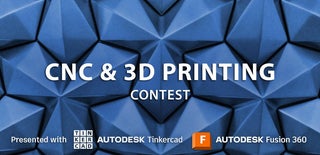Introduction: Airport Tug Cup Holder
Many of us enjoy a cup of coffee(or tea, no judgment hehe) during our day and some work vehicles don't have the capabilities where we can place cups. I used to work at the airport and many of the ground crew (including myself) had to hold our coffee in one hand and drive with the other.
Another solution to this is to finish the coffee before we drive or not drink coffee at all. My response is that I am a plane spotter... I like to go watch aircraft taking off and landing and some of the photogenic locations are on the other side of where my office is. Here are some photos I took(Definitely not using this instructable as an excuse to share my photos)
Since I have never written a proper instruction set before, I am writing this instructable as a story to show the process
Of course, this instructable doesn't have to just be for a cup holder, it can be an instruction on how to 3d print something that may benefit your workplace.
Supplies
- any CAD software
- 3D Printer
- Measuring tools
Step 1: Find an Ideal Location
Look around the vehicle where the cup holder can be placed.
Consider:
- How the item can be attached? Most companies will not allow you to permanently (glue or weld, etc.) modify their equipment since it's their property. So you will most likely create something that is removable see if there's a location to clip the item or maybe magnets. Make sure you can remove it at the end of the day
- The function of the item you're designing. What is the purpose? how heavy is the item, will it affect the machinery or the operator in a negative way(distracting or in the way)? It doesn't have to be a cup holder,
In my case, my vehicle has a lip on the operator side where I was able to create a clip so it won't sllide back and forth while driving.
Step 2: Take Measurements
Once, you find the location you want to use, take measurements of where the item is going over, leave a few mm of tolerance so the item can easily be removed. You can also eyeball the measurements. Since this is rapid prototyping, mistakes can happen and the part won't fit the first time, you can just make adjustments when you find problems.
Step 3: Initial Design
Things to consider:
- Keep it simple, Just focus on the main functions and how you attach it you can always add or remove features as you work
- Ease of use
My Initial Design only consisted of 1 part all layered in 1 direction. The next steps show the flaws of this method. I made sure that there was a loose tolerance between the part and the tug so that removing the cup holders at the end of the workday, it wouldn't be a pain to remove
Step 4: Peer Review
If you're planning to share your product for the rest of the office or just some of the crew(that you like hehe) you have to make sure that your product cannot fail too often. Make extras and share among the closest crew you're with and ask them how it's going once in a while. Ask on how the product can be improved and reasons why it's breaking.
As I started to use the cup holder for myself, a couple of my co-workers noticed and also wanted one for themselves. This initial model I created had a problem where the plastic layers are splitting due to the weight of the cup.(I'll post a photo if I can find that old model)
Step 5: Constantly Fix Issues
When an issue comes up like a part breaks, try to find a solution on how it can be fixed. It can be the design or the printing process. Look at the item in different angles and perspectives, and maybe ask a friend for suggestions.
It took me around a month or redesigning a way to prevent the seams from splitting before I realized I could print at a differnt angle so the parts can flex instead of break.
Step 6: Finished
Once you're happy with the end result, share it with your friends (or not), add a name to show that it's yours and yeah.
Hopefully this instructables helped you out with your rapid prototyping ideas. Thanks for reading I guess haha

Participated in the
CNC and 3D Printing Contest









